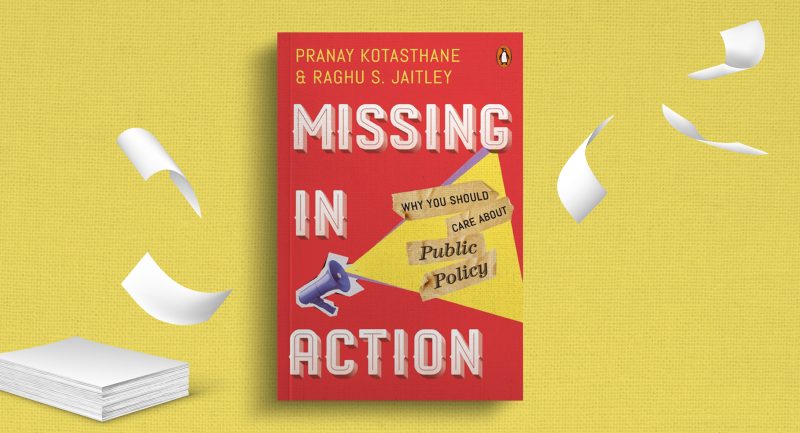
Exploring the lives of two remarkable women who chose to enter a field of activity which, in the middle of the nineteenth century, was seen a male domain, Rundrangshu Mukherjee’a A Begum and a Rani brings to light how unusual circumstances catapulted Begum Hazrat Mahal of Awadh and Rani Lakshmibai of Jhansi into the rebellion of 1857. Both of them sacrificed their lives trying to overthrow British rule, which they considered to be alien and oppressive. The afterlives of both, however, took on very different hues. The rani was made a nationalist icon: a woman on horseback with a raised sword, who died in battle. The begum was a relatively forgotten figure who did not get her due place in the roll-call of honour. Revisiting the revolt of 1857 from a unique perspective and looking at their afterlives, the myths, this book attempts to set the record straight, while tracing their fascinating trajectories.

Read on for a glimpse into the convoluted process of historiography that deifies one heroine while appearing to disregard the other.
The way Lakshmibai is revered and remembered is in sharp contrast to the remembrance of Hazrat Mahal. It is not that the latter is effaced from history. Rather, she is not given the kind of attention and importance that was and is still accorded to Lakshmibai. To an extent, this neglect is derived from the nineteenth-century British historians who described Lakshmibai as a heroic adversary but did not use such accolades for Hazrat Mahal. Indian academic historians in the centenary year followed this trend. R.C. Majumdar in his book has a section called ‘Heroes’. Hazrat Mahal does not feature there; Lakshmibai, of course, does, as does Maulavi Ahmadullah Shah. Unwittingly or otherwise, writers on 1857 seem to have set up a hierarchy of heroes in which Hazrat Mahal was many rungs lower than Lakshmibai. A hierarchy of heroes is suggested by Savarkar, who in his influential book devoted one chapter to ‘Oudh’ and another to ‘Lucknow’. In the latter, he wrote, ‘This Begum of Oudh [Hazrat Mahal], though not quite another Lakshmi Bai, was undoubtedly a great organizer, full of love of liberty and the spirit of daring [italics mine].’ This statement is appreciative of Hazrat Mahal’s courage, her qualities as an organizer and as an upholder of freedom (Savarkar, as we shall see in the next paragraph, detailed her organizational and administrative skills) but is unwilling to place her at the same level as Lakshmibai. Savarkar did not say where Hazrat Mahal—who was also brave, a fighter for liberty and an able administrator—fell short in comparison to Lakshmibai. The italicized phrase in the above quotation thus hangs as an enigma. It would be utterly erroneous to say that Savarkar was making this comparative statement on the basis of his religious predilections. In 1909, when the book was published, Savarkar had not yet emerged as the principal ideologue of Hindutva that he was later to become. His book on 1857 argued that Hindus and Muslims had fought together in the war of independence. In fact, in his introduction to the Savarkar noted very pointedly, ‘The feeling of hatred against the Mahomedans was just and necessary in the times of Shivaji—but such a feeling would be unjust and foolish if nursed now, simply because it was the dominant feeling of the Hindus then.’ According to Savarkar, hatred of the Muslims was an emotion arising out of a particular historical conjuncture. In the early twentieth century, as in 1857, such sectarian emotions were unfair and irrelevant. Savarkar thus had no hesitation in devoting a full chapter to Maulavi Ahmadullah Shah (he called him ‘Moulvie Ahmad Shah’). This only makes his non-inclusion of Hazrat Mahal in his gallery of heroes more complex, if not incomprehensible. This almost complete erasure of Hazrat Mahal is particularly bewildering given the fact that she became a rebel long before Lakshmibai and remained one even after Lakshmibai had met her death on the battlefield. Describing the actions of Hazrat Mahal, Savarkar wrote how she went about appointing various officers to the judicial, revenue, police and military departments. He added, ‘These officers selected were such as were loved and honoured by the representatives of the Sepoys, by Mahbub Khan [Savarkar noted that Hazrat Mahal had ‘perfect confidence’ in him] and other leading Sirdars, and also by the large numbers of the people who hurried from all parts of Oudh to Lucknow to join the great War of Independence.’ Savarkar went on to say that every day Hazrat Mahal held a durbar to discuss political affairs and ‘there the Begum Sahiba exercised authority in the name of the Nabob. The news that Oudh was free and that not a trace of English rule remained there was sent to the Emperor of Delhi, under the Begum’s seal, along with valuable presents.’ Hazrat Mahal, Savarkar wrote, sent letters to all the neighbouring zamindars and vassal rajas to come to Lucknow with armed followers. According to Savarkar, ‘From the appointment of the various civil officers, from the good order in all the departments of Government, from the daily Durbars, and other signs, it was apparent that the revolt had ended and constructive government had begun.’In his appreciation of the role of Hazrat Mahal, Savarkar did not include the fact that she had actually drawn up battle plans and deployment of troops. Hazrat Mahal was a military leader, not just an administrator.









